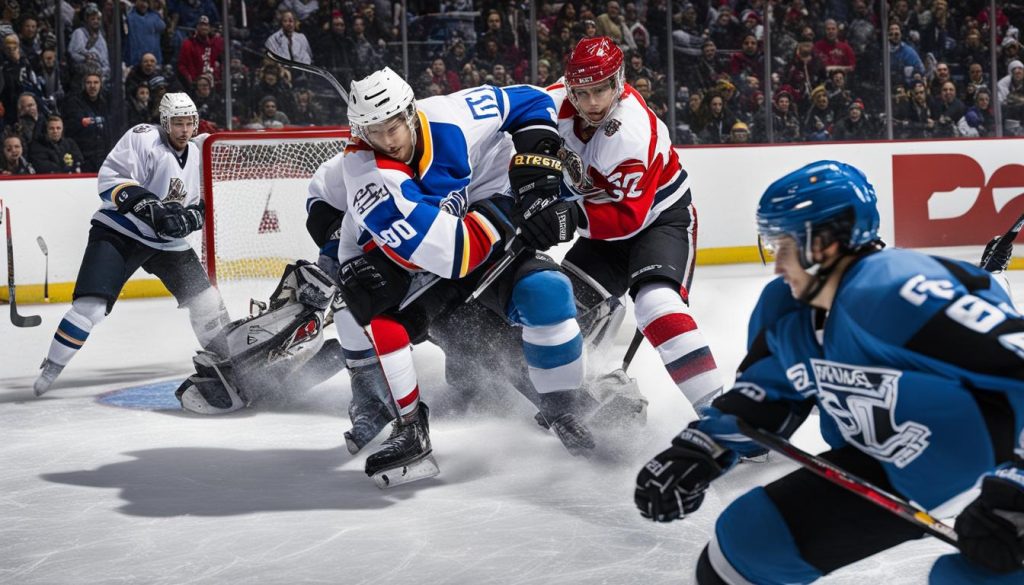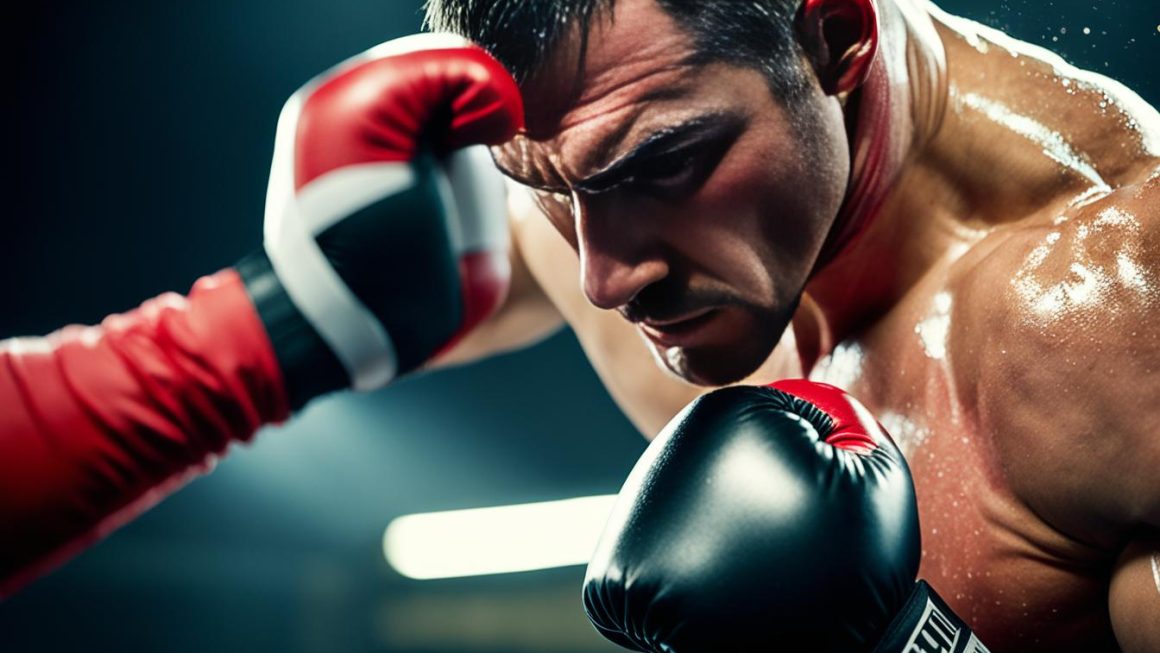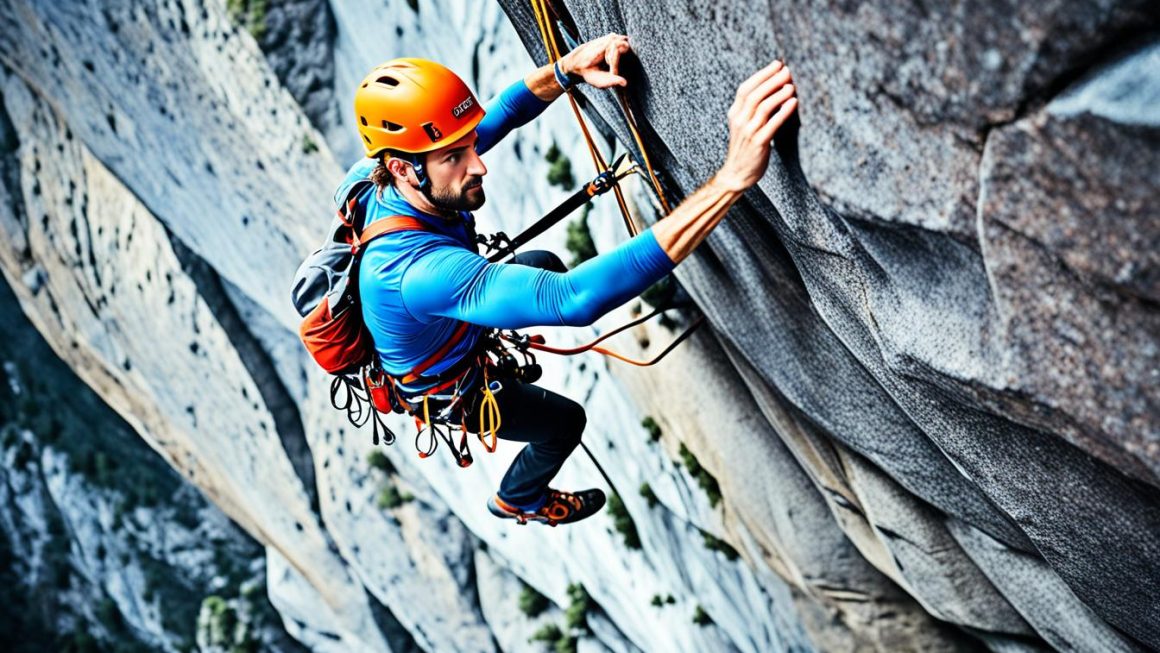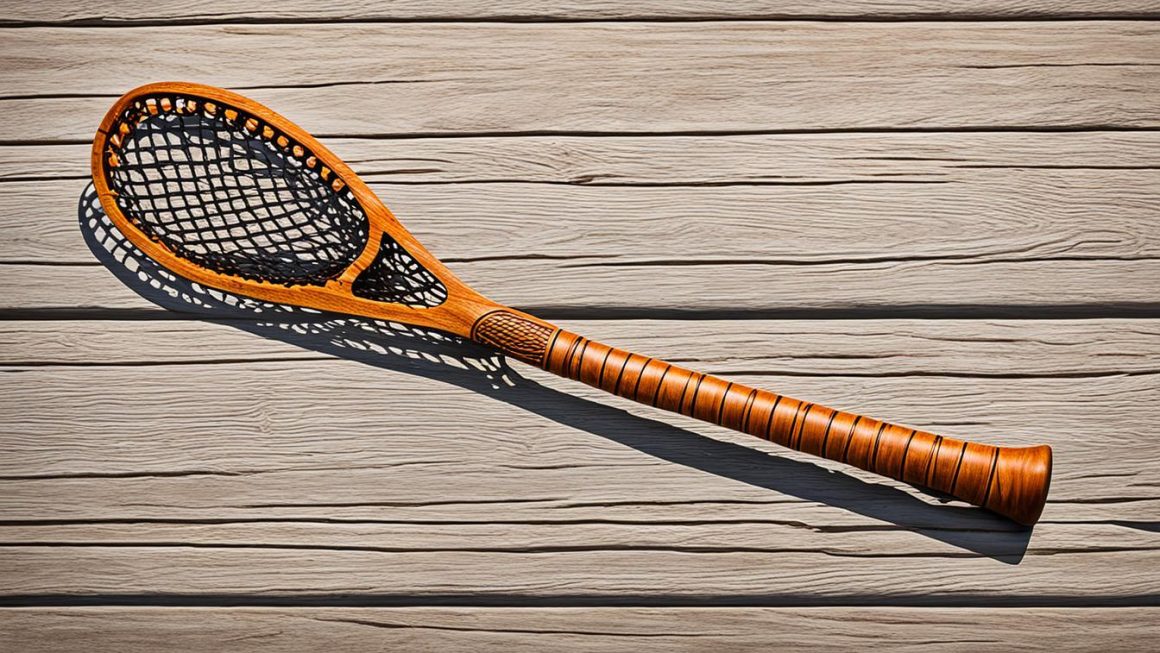When it comes to sports, the physicality, adrenaline rush, and camaraderie are some of the reasons why people participate. However, not all sports are created equal when it comes to cost. There are high-cost sports that cater to the elite, offering luxury experiences that come with a hefty price tag. In this article, we will delve into the world of extravagant sports and unveil the most expensive sport to play.
Whether it’s Formula One racing, sailing, or bobsledding, these top-tier sports demand substantial financial investments. But fret not! We will also explore budget-friendly alternatives so that you can enjoy the thrill of the game without breaking the bank. So, let’s dive into the world of high-cost sports and discover which sport reigns supreme in terms of extravagance.
Key Takeaways:
- Not all sports are created equal, with some being significantly more expensive to participate in.
- The most expensive sport offers luxury experiences and requires a substantial financial investment.
- Don’t worry if you’re on a budget! There are budget-friendly alternatives to these high-cost sports.
- Stay tuned to find out which sport tops the list as the most extravagant.
- Discovering the most expensive sport doesn’t mean you can’t enjoy sports altogether; it’s all about finding what fits your budget and interests.
Formula One Racing – The Pinnacle of Expensive Sports
When it comes to expensive sports, Formula One Racing (F1) takes the pole position. Known for its high costs, F1 racing is the epitome of extravagance and luxury. The financial stakes in this high-octane sport are sky-high, making it the most expensive sport in the world.
The cars alone are a symbol of opulence, with a price tag that can soar into the hundreds of thousands or even millions of dollars. These cutting-edge machines are built for speed, incorporating the latest technology and engineering advancements.
Racers in the Formula One circuit are often sponsored by corporations. These sponsorships play a crucial role in financing the exorbitant costs associated with the sport. With sponsorships, racers have access to the necessary financial support to cover expenses such as car maintenance, team salaries, and travel costs.
However, one of the biggest contributors to the high costs of Formula One Racing lies in the fuel consumption. More than $1000 is spent on fuel per car in each race, emphasizing the extraordinary expenses incurred by participants in this elite sport. The vast amounts of carbon emissions generated as a result have a detrimental impact on the environment.
In addition to its financial implications, Formula One Racing also leaves a significant carbon footprint. The sport’s environmental impact cannot be ignored, as it generates tons of carbon dioxide each year. From the fuel burned during races to the resources consumed for manufacturing and maintaining the cars, Formula One Racing has a substantial ecological consequence.
Sailing – Riding the Expensive Winds
Sailing is considered one of the most expensive sports, with costs associated with equipment, club membership fees, and lessons. Even smaller sailing boats can start at around $2000 for a used model. The initial investment in sailing equipment, including sails, rigging, and safety gear, can add up quickly. Furthermore, club membership fees can be significant, especially at prestigious yacht clubs that offer exclusive access to sailing facilities and events.
However, if you’re seeking a more budget-friendly alternative to sailing, consider stand-up paddleboarding (SUP). Stand-up paddleboarding offers a similar outdoor experience to sailing but at a fraction of the price. In SUP, you navigate the waters by standing on a long, stable board and using a single paddle to propel yourself forward. The equipment costs for SUP are considerably lower, with entry-level paddleboards available for as little as $200.
“Sailing is a sport that requires a significant investment, but the feeling of harnessing the power of the wind and gliding across the water is truly unparalleled.”
Sailing offers a unique experience that combines adventure, skill, and a connection with nature. Despite being an expensive sport, the joy of sailing and the thrill of exploring new horizons make it a worthwhile pursuit for many. However, if you’re on a tight budget or looking for a more accessible option, stand-up paddleboarding provides a budget-friendly alternative that allows you to enjoy time on the water without the hefty price tag.
Sailing vs. Stand-up Paddleboarding: A Cost Comparison
| Sailing | Stand-up Paddleboarding |
|---|---|
| Expensive boat and equipment costs | Affordable entry-level paddleboards available |
| Club membership fees | No additional membership fees |
| Lessons and training expenses | Lessons available but optional |
| Requires multiple crew members | Can be enjoyed solo or with friends |
While sailing remains an expensive and prestigious sport, stand-up paddleboarding offers a more budget-friendly way to experience the water. Whether you choose to sail or paddleboard, both activities provide a sense of freedom and adventure that can only be found on the open water.
Bobsledding – High Speeds and High Costs
Bobsledding is an exhilarating winter sport that combines speed, teamwork, and precision. However, it is also known for being an expensive sport, requiring significant investment in equipment and often relying on corporate sponsorship. One of the biggest expenses in bobsledding is the cost of a bobsleigh itself. These specialized sleds can start at around $30,000, with more advanced models reaching six-figure prices.
Aside from the bobsleigh, there are other equipment costs associated with the sport. Helmets, racing suits, and other safety gear are crucial for protecting the athletes and can add to the overall expense. Additionally, the maintenance and transportation of the bobsleigh and equipment can also contribute to the high costs of the sport.
While the thrill and adrenaline rush of bobsledding are undeniable, it’s important to acknowledge the risks involved. Bobsledding requires precise control and synchronization among team members, and even the slightest error can lead to accidents or injuries. This aspect, combined with the hefty expenses, makes bobsledding a sport that may not be accessible to everyone.
However, there is a safer and more affordable alternative for those who want to experience the thrill of sliding down a snowy hill. Traditional sledding is a popular winter activity that can be enjoyed with a wooden sled, which typically costs around $160. While it may not reach the high speeds of bobsledding, traditional sledding provides a fun and exhilarating experience for individuals and families alike.
| Expense | Bobsledding | Traditional Sledding |
|---|---|---|
| Cost of Equipment | Expensive, starting at $30,000 for a bobsleigh | Affordable, starting at $160 for a wooden sled |
| Risks | High-risk sport requiring precise control and synchronization | Lower risk, suitable for individuals and families |
| Accessibility | Expensive sport often relying on corporate sponsorship | More affordable and accessible for a wider range of people |
Tennis – The Cost of the Court
While tennis may seem like a simple sport, it can be surprisingly expensive due to court rental fees and additional expenses such as competition entry fees and specialized equipment. The popularity of tennis has led to high demand for tennis courts, resulting in costly court rental fees at various clubs and facilities. These fees can vary depending on location, time of day, and the quality of the court.
In addition to court fees, tennis players often face additional expenses. Competition entry fees can be quite substantial, especially for tournaments at higher levels. Participating in multiple tournaments throughout the year can add up quickly, putting a strain on your budget. Furthermore, specialized tennis equipment such as rackets, balls, and shoes can be expensive, especially if you opt for high-quality brands.
However, there is a budget-friendly alternative to playing tennis without spending a fortune:
- Set up a net in your backyard or at a local park: Instead of paying for court rental fees, you can enjoy the game by setting up a net in your backyard or finding a public park with tennis courts. Many parks offer free or low-cost access to their courts, allowing you to play without breaking the bank.
- Play with a more casual setup: Instead of investing in expensive equipment, you can use affordable rackets and balls suitable for recreational play. While professional-grade gear may enhance your performance, it is not necessary for casual matches with friends or family.
- Join a community tennis group: Look for local community groups or clubs that organize regular tennis meetups. These groups often have shared memberships or discounted rates for court rentals, making it more affordable to play tennis on a regular basis.
By opting for these budget-friendly alternatives, you can still enjoy the thrill of playing tennis without the hefty price tag. Whether you’re a seasoned player or a beginner looking to get started, exploring these cost-effective options can help you save money without compromising on the enjoyment of the sport.
Looking back at the costs associated with playing tennis, it’s essential to consider your financial situation and find the approach that best aligns with your budget. Tennis can be a fantastic sport to engage in, offering physical activity, competition, and social connections. However, it’s equally important to ensure that the sport remains accessible to individuals from diverse financial backgrounds. By exploring more budget-friendly alternatives, you can make tennis a sport that everyone can enjoy, regardless of their financial resources.
Pentathlon – The Price of Versatility
The modern pentathlon is an exciting and versatile sport that combines five distinct disciplines: fencing, swimming, horseback riding, shooting, and running. However, participating in the pentathlon can be quite expensive due to the equipment costs associated with each discipline.
Fencing: To indulge in the art of fencing, you’ll need a suitable weapon, protective gear, and a mask. The cost of quality fencing equipment can range from several hundred to thousands of dollars for professionals.
Swimming: Swimmers competing in the pentathlon require specialized swimming gear, including goggles, swim caps, and swimsuits optimized for performance. While swimming equipment costs are relatively lower compared to other disciplines, these expenses can still add up.
Horseback Riding: Equestrian enthusiasts know that the cost of owning and maintaining a horse can be exorbitant. Horseback riding in the pentathlon requires access to well-trained horses, along with riding gear such as saddles, bridles, and protective equipment.
Shooting: For the shooting discipline, pentathletes need reliable firearms, ammunition, and safety equipment. Costs can vary depending on the level of competition and firearm preference, but it’s not uncommon for shooting equipment costs to reach thousands of dollars.
Running – The Budget-Friendly Alternative
While participating in the complete pentathlon might be cost-prohibitive for many, there is one discipline that stands out as a budget-friendly alternative: running. Running requires minimal equipment and can be enjoyed anywhere, making it an accessible and affordable sport for anyone looking to channel their athleticism and endurance.
To get started with running, all you need are a pair of comfortable running shoes and suitable clothing. Running shoes can range in price depending on the brand and features, but there are plenty of budget-friendly options available that provide adequate support and cushioning. Whether you prefer road running or exploring nature trails, running allows you to enjoy the benefits of physical activity without breaking the bank.
The modern pentathlon includes a wide range of disciplines, each with its own set of expensive equipment costs. However, running stands out as a budget-friendly alternative that removes the price barrier, allowing individuals to experience the thrill of the pentathlon without the financial burden.
| Discipline | Equipment Costs |
|---|---|
| Fencing | Several hundred to thousands of dollars |
| Swimming | Varies, but relatively lower costs |
| Horseback Riding | High costs associated with horse ownership and riding gear |
| Shooting | Costs can reach thousands of dollars |
| Running | Minimal equipment costs |
By focusing on running, aspiring athletes can engage in a sport that offers numerous health benefits, such as improved cardiovascular fitness, weight management, and reduced stress levels, all without the hefty price tag.
Polo – Riding with High Costs
Polo is an elite sport that is known for its extravagant and luxurious nature. It involves horseback riding and is considered one of the most expensive sports globally. The high costs associated with polo can make it exclusive and inaccessible to many individuals.
Participating in polo requires significant horse-related expenses, such as owning and maintaining horses, training, stabling, and equipment costs. The price of well-trained polo ponies alone can reach hundreds of thousands of dollars. Additionally, the ongoing care and maintenance of these horses can be financially demanding.
Playing polo is like riding a $10,000 bill while you’re chasing a $1 ball. – Anonymous
However, if you are interested in the thrill of horseback sports but prefer a more accessible alternative, soccer is a great option. Soccer is a globally popular sport that can be played informally with small teams or as a casual kickabout in the park with minimal equipment. It offers a similar sense of camaraderie and teamwork without the high costs associated with polo.

Comparing the Costs: Polo vs. Soccer
| Polo | Soccer |
|---|---|
| Expensive horse-related expenses | Minimal equipment costs |
| High costs of polo ponies, training, and stabling | No need for horses or specialized equipment |
| Exclusive and inaccessible | Popular and accessible worldwide |
By choosing soccer as an alternative to polo, you can enjoy an exciting team sport without the financial burden of horse-related expenses. Whether you play in local leagues, join community teams, or simply have a casual kickabout in the park, soccer provides a more affordable and inclusive option for horse enthusiasts and sports lovers alike. So, grab a ball and start kicking!
Competitive Swimming – Making Waves in Expenses
Competitive swimming is an exhilarating sport that pushes athletes to their limits in the pursuit of speed and excellence. However, it is also known for being an expensive sport that requires significant financial investments. The costs associated with competitive swimming can include pool rental fees, training costs, and additional expenses such as hair removal products and swim gear. These expenses can quickly add up and become a barrier for aspiring swimmers who may be on a tight budget.
One of the main contributors to the high cost of competitive swimming is pool rental fees. Many swimming clubs and teams rent out pool facilities for training sessions, and these costs are often shared among the swimmers. Depending on the location and the duration of the training sessions, pool rental fees can range from a few hundred dollars to several thousand dollars per year. This can put a strain on the financial resources of athletes, especially those who are just starting out in the sport.
In addition to pool rental costs, competitive swimmers also need to consider the expenses associated with training. This includes the fees for coaching, which can vary depending on the level of expertise and reputation of the coach. Training costs may also include expenses for specialized equipment such as swim fins, kickboards, and paddles, as well as fees for participation in swim meets and competitions.
Furthermore, competitive swimmers often invest in hair removal products to reduce drag in the water and improve their performance. This can include regular trips to the salon for waxing or laser hair removal treatments, which can be an additional financial burden for swimmers.
However, there is a budget-friendly alternative to swimming in pools that require payment – wild swimming. Wild swimming refers to swimming in natural bodies of water such as lakes, rivers, and oceans. Not only does wild swimming provide a unique and exhilarating experience, but it also allows swimmers to enjoy the water for free. Whether it’s diving into a crystal-clear lake or riding the waves of the ocean, wild swimming offers a budget-friendly alternative to expensive pool rentals.
While wild swimming doesn’t provide the same structured training environment as pool swimming, it can still offer a range of benefits. Swimmers can improve their cardiovascular fitness, strengthen their muscles, and enjoy the mental and emotional benefits of being in nature. It’s important to note that wild swimming should be done safely and responsibly, taking into account factors such as water temperature, currents, and potential hazards.
Swimming is a sport that offers numerous physical and mental health benefits, and it should be accessible to individuals of all financial backgrounds. By exploring budget-friendly alternatives such as wild swimming, aspiring swimmers can pursue their passion without incurring excessive costs. Whether in a pool or in the open water, swimming is a sport that can provide joy, accomplishment, and a sense of belonging.
Equestrian Competitions – Jumping into High Costs
Equestrian competitions are renowned for being an expensive sport, with various costs associated with participating in this prestigious discipline. From the cost of owning a horse to equipment expenses and transportation fees, the financial investment can be substantial.
“Participating in equestrian competitions involves significant expenses. Horse-related expenses include the purchase or lease of a horse, stable fees, feed expenses, veterinary care, and grooming supplies. Additionally, specialized riding gear, such as saddles, bridles, and protective equipment, can be quite costly. Transportation costs, such as travel to competitions and hauling the horse, add to the overall expenses. Lastly, entry fees for equestrian competitions can range from affordable to exorbitant, depending on the level of competition and the prestige of the event.”
For those seeking a more budget-friendly alternative to equestrian competitions, dog training is an excellent choice. While dog training offers a different experience from equestrian sports, it presents similar opportunities to connect with an animal and develop a strong bond in an indoor setting. By enrolling in dog training classes, you can engage in obedience training, agility exercises, and even competitive events such as dog shows.
Whether you choose to embark on the journey of equestrian competitions or explore alternative options like dog training, the key is to find a sport that aligns with your interests and budget.
| Equestrian Expenses | Approximate Costs |
|---|---|
| Horse Purchase or Lease | $5,000 – $500,000+ |
| Stable Fees | $500 – $2,000 per month |
| Feed Expenses | $200 – $600 per month |
| Veterinary Care | $1,000 – $10,000+ per year |
| Grooming Supplies | $50 – $200+ |
| Riding Equipment | $1,000 – $5,000+ |
| Transportation Costs | $500 – $1,500+ |
| Competition Entry Fees | $50 – $1,000+ |
Hockey – Ice and Expenses Collide
Ice hockey is undoubtedly an exciting and thrilling sport. However, it also comes with its fair share of expenses. From equipment costs to ice rink rentals, participating in ice hockey can be quite a costly endeavor. Let’s take a closer look at the financial aspects of this exhilarating sport.
The Price of Equipment
One of the primary expenses in ice hockey is the cost of equipment. From skates and helmets to sticks and pads, the necessary gear for this sport can add up quickly. High-quality equipment is crucial for both safety and performance, but it often comes at a premium price.
“Investing in top-notch equipment is essential for your safety on the ice and to optimize your gameplay.” – John Wilson, Ice Hockey Expert
While it’s possible to find more affordable options, especially for beginners, it’s important not to compromise on quality. Safety should always be a top priority.
The Expense of Ice Rink Rentals
Another significant cost associated with ice hockey is the rental of ice rinks. Ice rinks provide the necessary infrastructure for practicing and playing the sport, but their availability and fees can vary widely.
Rental fees for ice rinks can range from $200 to $500 per hour, making it a considerable expense for individuals or teams. This cost can add up over time, especially for regular training or competition sessions.
A Budget-Friendly Alternative: Street Hockey
If the expenses of ice hockey are beyond your budget, don’t worry! A fantastic alternative is street hockey.
Street hockey is played on pavement or other flat surfaces instead of an ice rink. It requires minimal equipment compared to ice hockey and can be enjoyed with friends and neighbors in your local neighborhood.
Benefits of Street Hockey:
- No need for ice rink rentals
- Minimal equipment requirements
- Accessible and convenient
- Opportunity for casual, friendly matches
While street hockey may lack the speed and thrill of ice hockey, it still offers a fun and competitive experience for enthusiasts of all ages and skill levels.

As you can see, ice hockey can be an expensive sport due to equipment costs and ice rink rentals. However, by exploring more budget-friendly alternatives like street hockey, you can still enjoy the excitement of the game without breaking the bank.
Golf – Swinging at High Costs
Golf is a revered sport known for its elegance and precision. However, indulging in this beloved pastime can come with a hefty price tag. The expenses associated with golf include membership fees at prominent country clubs and the cost of equipment. These factors contribute to golf’s reputation as an expensive sport.
“The green fees and annual membership fees are where costs can really add up. Depending on the exclusivity of the club, initiation fees can reach into the six figures, not to mention the recurring annual membership dues,” explains John Smith, a golf enthusiast and avid player.
Country club membership fees can vary greatly depending on the location and prestige of the club. Annual dues alone can range from a few thousand dollars to tens of thousands of dollars. While some clubs offer more affordable options, the most prestigious ones demand exorbitant fees.
Equipment costs are another significant aspect of golf expenses. High-quality clubs, golf balls, and other necessary gear can quickly add up. For those who pursue the sport seriously, investing in the latest golf equipment can easily reach thousands of dollars.
However, if you’re looking for a more budget-friendly alternative to golf, consider giving disc golf a try. Disc golf is a similar sport that can be played in public parks or designated courses. Instead of using traditional golf clubs and balls, players throw a frisbee-like disc towards a target. This alternative provides a similar outdoor experience while significantly reducing the financial burden.
Disc Golf vs. Golf: A Cost Comparison
| Golf | Disc Golf | |
|---|---|---|
| Membership Fees | Varies greatly depending on club | Often free or minimal fees for course entry |
| Equipment Costs | Expensive | Relatively affordable |
| Course Access | Restricted to country clubs or golf courses | Public parks and designated disc golf courses |
| Playing Style | Precision-based | Throwing a disc towards a target |
As shown in the table above, disc golf offers a more accessible and cost-effective way to enjoy a similar outdoor sport experience without the high membership fees and equipment costs associated with traditional golf.
So, if you’re looking to embrace the joys of golf without breaking the bank, disc golf is a fantastic alternative that allows you to enjoy the sport while keeping costs in check.
Archery – Aiming at Expenses
Archery is a captivating and skillful sport that dates back centuries, but it can also be quite expensive due to the cost of quality bows, arrows, and additional equipment. To fully enjoy the sport and improve your skills, investing in reliable and well-made equipment is essential. However, for those looking for a more budget-friendly alternative to archery, target shooting with an air rifle proves to be an excellent option.
Target shooting with an air rifle offers a similar experience to archery with lower equipment costs. Air rifles, also known as pellet guns, are available in a range of prices to suit different budgets. They provide a great opportunity to practice precision and focus while honing your shooting skills. Whether you choose to shoot indoors or at shooting ranges, the cost of an air rifle and pellets is significantly lower than that of archery equipment.
Key Benefits of Target Shooting with an Air Rifle:
- Cost-effective alternative to archery
- Provides a similar focus and precision experience
- Lower equipment costs
- Accessible for indoor and outdoor settings
- Opportunity to improve shooting skills
Engaging in target shooting with an air rifle allows you to develop hand-eye coordination, concentration, and focus just like in archery. It can be enjoyed both individually and in friendly competitions, making it a versatile option for those looking for an affordable alternative to archery.
Target shooting with an air rifle offers all the excitement and skill-building opportunities of archery, but at a fraction of the cost. It provides a great way to practice precision and accuracy while enjoying a fulfilling and challenging sport.
Consider this cost-effective alternative to archery if you’re on a budget but still want to experience the thrill of a precision-focused sport. Whether you’re a beginner or an experienced shooter, target shooting with an air rifle is a great way to stay engaged and improve your skills without breaking the bank.
| Archery | Target Shooting with an Air Rifle |
|---|---|
| Cost of quality bows | Lower equipment costs |
| Cost of arrows | Minimal expense for pellets |
| Additional equipment costs (quivers, arm guards, etc.) | Less need for additional equipment |
Martial Arts – Mastering High Costs
Participating in martial arts can be a rewarding and physically demanding experience. However, it’s important to be aware of the expenses associated with this popular discipline. From equipment costs to ongoing training and certification, martial arts can be an expensive sport to pursue.
The cost of equipment is one of the primary considerations for aspiring martial artists. Depending on the style and level of training, the required equipment can include uniforms, protective gear, weapons, and training aids. These items can quickly add up, especially if you’re starting from scratch.
Training and certification are another aspect that can contribute to the overall cost of martial arts. Regular training sessions and classes may require monthly membership fees or session fees, which can vary depending on the martial arts school or studio. Additionally, if you’re aiming to progress in rank, there may be testing fees associated with each level of certification.
Despite the high costs, there are alternatives available for those looking to experience the benefits of martial arts without breaking the bank. One such alternative is yoga, which provides a range of physical and mental benefits similar to those of martial arts. Yoga can be practiced at home using online resources or in affordable yoga studios with minimal equipment needed.
By exploring alternatives like yoga, you can still engage in a physical discipline that suits your interests and budget. Remember, the most important aspect of any sport or activity is finding what works best for you both physically and financially.
| Martial Arts | Expenses | Alternative |
|---|---|---|
| Equipment | Uniforms, protective gear, weapons, training aids | N/A |
| Training | Monthly membership fees, session fees | N/A |
| Certification | Testing fees for each level | N/A |
Conclusion
In conclusion, participating in sports can be an enjoyable and fulfilling experience. However, some sports come with a hefty price tag due to the cost of equipment, training, and other expenses. Formula One racing, sailing, bobsledding, tennis, pentathlon, polo, competitive swimming, equestrian competitions, ice hockey, golf, archery, and martial arts are among the most expensive sports in the world.
Fortunately, for those looking for more budget-friendly alternatives, there are options available that provide similar experiences at a lower cost. Stand-up paddleboarding, traditional sledding, backyard tennis, running, soccer, wild swimming, dog training, street hockey, disc golf, target shooting, and yoga all offer opportunities to stay active and have fun without breaking the bank.
When choosing a sport to participate in, it is essential to consider your budget and interests. Don’t let the cost deter you from pursuing your passion for sports. With the right research and creativity, you can find a sport that suits your financial situation and provides an enriching experience. Remember, it’s not always about the price tag; it’s about finding a sport that brings you joy and keeps you active and engaged.



